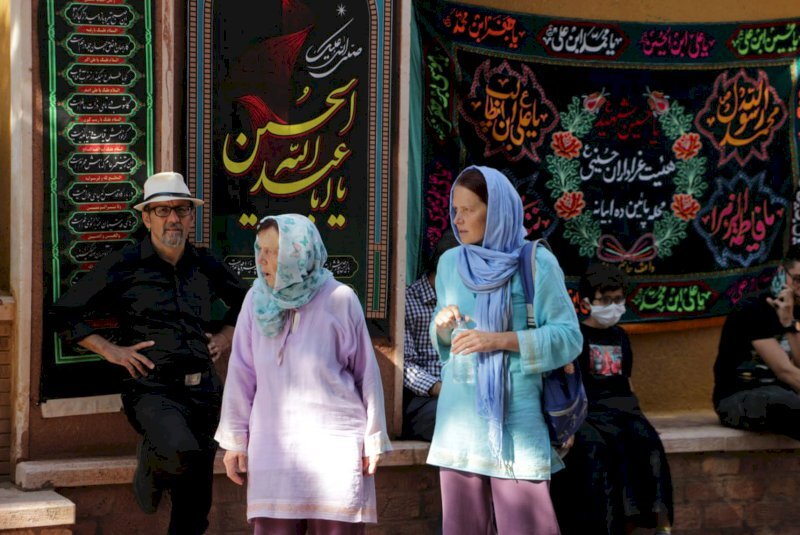Muharram rituals in Kashan attended by 130 foreign travelers

TEHRAN —More than 130 foreign travelers attended mourning ceremonies in the tourist city of Kashan, Isfahan province’s tourism chief said on Thursday.
“Over 130 foreign nationals traveled to Kashan to visit Muharram rituals during the first 20 days of the [lunar] month,” Alireza Izadi was quoted by the CHTN as saying.
In addition, countless domestic travelers visited Kashan during the mentioned period to attend various mourning rituals held in the ancient city, the official said.
“We intend to help promote religious tourism in Kashan more than in the past,” he said.
Over the past couple of years, Yazd, Meybod, Isfahan, and Kashan have been among the cities which hosted the highest numbers of foreign tourists on the ninth and the tenth days of Muharram (Tasua and Ashura) when the mourning ceremonies reach their climax and a lively atmosphere prevails in all corners of the country to commemorate the martyrdom of Imam Hussein (AS), a grandson of the Prophet Muhammad (PBUH), slain in 680 CE at Karbala in modern-day Iraq.
For Iranians, Ashura is a solemn day of mourning, marked by various mourning rituals and passion plays re-enacting the martyrdom. Men and women, dressed in black, parade through the streets, slapping their chests and chanting. Some people seek to emulate the suffering of their third Shia Imam by flagellating themselves with chains in a symbolic act.
They say the commemoration of Ashura is a tribute to truth and justice and condemnation of tyranny anytime and anywhere. This is perhaps one of the many reasons why a day like Ashura can never be overlooked, as these rituals encompass universal values that will never wear out.
Travelers are welcomed in all places where Muharram rituals are held. Holidaymakers can witness various ceremonies, such as Tazieh, a passionate play inspired by historical and religious narrations, and Sineh-Zani [beating the chest]. They also converse with locals and religious figures while taking shots of mourners to document the events.
Religious ceremonies in Iran more than often include food offerings, whether they are held at public venues like mosques or private residences. These communal gatherings are also a kind of forum where friends, acquaintances, and neighbors meet over food that is served after the ceremonies. During Muharram, every village, township, city, or metropolis is abuzz with preparation for food offerings known as Nazri, the processions of which are usually sponsored by wealthy benefactors.
On Tasu’a and Ashura, each neighborhood sets stands to offer food to the mourners and the passersby. Also, households provide dishes to their neighbors by distributing parcels to houses or hosting mourning ceremonies inside their homes and asking people to join by invitation.
Kashan is situated on a route that connects Tehran to the giant destinations of Isfahan, Shiraz, and Yazd. Moreover, the ancient town is a gateway to many sights, stories, and surrounding attractive villages to discover. Amongst the highlights are the lavishly decorated houses of Brujerdi, Tabatabai, Ameri, and Abbasi.
Apart from cultural sites such as a domed bazaar, where travelers can find loads of Kashani traditions and souvenirs, they may escape the city for the UNESCO-registered Fin Garden, which is believed to be the epitome of Eden.
Kashan is highly famed for rosewater distillation ceremonies, which draw visitors from all over the country. Many believe traditionally distilled rosewater is of higher quality than that produced in factories, probably due to shorter time intervals between the harvest and distillation practices. Golab or rosewater is a fragrant distillate of Mohammadi roses, which is used in dishes to flavor them or being consumed as a religious perfume as well.
In addition, Kashan embraces some archaeological gems. Most importantly, the Tepe Sialk has yielded interesting pottery pieces, metal tools, and domestic implements made from stone, clay, and bone that date from as early as the 4th millennium BC.
The name Kashan is tightly bound to the UNESCO-designated Abyane, which is situated around 90 km in a southward direction. The ancient village is known for its gorgeous architecture, traditional clothing specifically from the inhabitants, and its old dialect of Persian that dates from the Sassanid era. Abyaneh is truly a living piece of history. Its people’s ways of life and traditions have survived almost unchanged for hundreds of years.
AM
